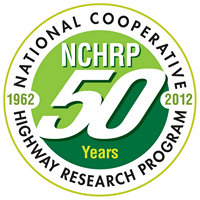The American Association of State Highway and Transportation Officials (AASHTO) is a standards setting body which publishes specifications, test protocols, and guidelines that are used in highway design and construction throughout the United States. Despite its name, the association represents not only highways but air, rail, water, and public transportation as well.
The Texas A&M Transportation Institute (TTI) in Bryan/College Station, Texas is a transportation research agency in the United States. The institute was created in 1950, primarily in response to the needs of the Texas Highway Department. TTI is a state agency and a member of the Texas A&M University System.

The American Public Transportation Association (APTA) is a nonprofit group of approximately 1,500 public and private sector member organizations that promotes and advocates for the interests of the public transportation industry in the United States.
The Harmer E. Davis Transportation Library —also known as the Institute of Transportation Studies Library (ITSL), the Berkeley Transportation Library, or simply as the Transportation Library— is a transportation library at the University of California, Berkeley, devoted to transportation studies.
SafetyLit is a bibliographic database and online update of recently published scholarly research of relevance to those interested in the broad field of injury prevention and safety promotion. Initiated in 1995, SafetyLit is a project of the SafetyLit Foundation in cooperation with the San Diego State University College of Health & Human Services and the World Health Organization - Department of Violence and Injury Prevention.

The Highway Capacity Manual (HCM) is a publication of the Transportation Research Board (TRB) of the National Academies of Sciences, Engineering, and Medicine in the United States. It contains concepts, guidelines, and computational procedures for computing the capacity and quality of service of various highway facilities, including freeways, highways, arterial roads, roundabouts, signalized and unsignalized intersections, interchanges, rural highways, and the effects of mass transit, pedestrians, and bicycles on the performance of these systems.
The Transportation Research Information Services online was a bibliographic database funded by sponsors of the United States Transportation Research Board (TRB), primarily the USA state departments of transportation and selected US federal transportation agencies. TRIS Online was hosted by the National Transportation Library under a cooperative agreement between the Bureau of Transportation Statistics and TRB. TRIS provided access to over 300,000 bibliographic records covering transportation research published in books, journal articles, technical reports and the media.
The Scientific and Technical Information (STI) Program of the National Aeronautics and Space Administration (NASA) collects, organizes, preserves, and releases the Agency's scientific and technical information. STI is derived from NASA's research and development efforts and NASA projects, programs, and missions. The program is essential in helping NASA avoid duplication of research, by sharing information to ensure that the U.S. maintains its preeminence in aerospace-related industries and education. Examples of NASA STI include technical papers and reports, contractor reports, conference papers and proceedings, journal articles, presentations, and technical information on websites. NASA STI also includes research information from NASA's predecessor agency, the National Advisory Committee for Aeronautics (NACA), which dates back to 1915 and transitioned to NASA at the advent of the National Aeronautics and Space Act of 1958 (Amended).
Channelization is a traffic engineering concept that employs the use of secondary roads to separate certain flows of traffic from the main traffic lanes. This method came into favor in the United States in the 1950s. One of the most effective and efficient methods of controlling the traffic on a highway is the adoption of high intersection geometric design standards. Channelization is an integral part of at-grade intersections and is used to separate turning movements from through movements where this is considered advisable and hence helps reduce the intensity and frequency of loss of life and property due to crashes to a large extent. Proper channelization increases capacity, improves safety, provides maximum convenience, and instils driver confidence. Improper channelization has the opposite effect and may be worse than none at all. Over-channelization should be avoided because it could create confusion and worsen operations. Channelization of at-grade intersections is the separation or regulation of conflicting traffic movements into definite paths of travel by the use of pavement markings, raised islands, or other suitable means to facilitate the safe and orderly movement of both vehicles and pedestrians.

Francis Bernard Francois was an American engineer and lawyer who received recognition for his achievements in the field of engineering and policy leadership in regional government, surface transportation infrastructure and research. In 1999, he was elected to the National Academy of Engineering.

Hyman Norman Abramson was an American engineer and scientist. He was the Executive Vice President of the Southwest Research Institute at the University of Texas at Austin, and the manager and principal investigator in several NAE and NRC research projects.

The National Cooperative Highway Research Program (NCHRP) conducts research in problem areas that affect highway planning, design, construction, operation, and maintenance in the United States. Spearheaded by the Transportation Research Board (TRB), part of the National Academies of Sciences Engineering and Medicine, it is jointly supported by federal agencies, state departments of transportation (DOTs), and other nonprofit organizations.
The Journal of Transport and Land Use is an open access peer-reviewed academic journal covering the interaction of transport and land use that was established in 2008. As of August 2011, it is the official journal of the World Society for Transport and Land Use Research. It is operated on a volunteer basis with institutional support from the Center for Transportation Studies and the Networks, Economics, and Urban Systems Research Group at the University of Minnesota, where it is published three times per year. The founding editor is David M. Levinson and the editor-in-chief since 2023 is Ying Song.
The Center for Transportation Research (CTR) is a research center affiliated with the Cockrell School of Engineering's Department of Civil, Architectural, and Environmental Engineering at The University of Texas at Austin in Austin, Texas. CTR is a research institution focused on transportation research and education.
The Journal of Transport Geography is a quarterly peer-reviewed scientific journal published by Elsevier in association with the Transport Geography Research Group of the Royal Geographical Society. The journal was established in 1993 and covers all aspects of transportation geography. The editor-in-chief is Frank Witlox. The founding editor is Richard Knowles.

Randall W. Eberts is an American economist who specializes in the public workforce system, public finance, urban economics, labor economics, infrastructure and productivity, and policies promoting student achievement. He was president of the W.E. Upjohn Institute for Employment Research in Kalamazoo, Michigan from 1993 until 2019 and is currently a senior researcher there.

Daniel Sperling is the American founding Director of the Institute of Transportation Studies at the University of California, Davis (ITS-Davis); Professor of Civil and Environmental Engineering; Professor of Environmental Science and Policy; and Faculty Director of the Policy Institute for Energy, Environment, and the Economy at the University of California, Davis.

Long-Term Pavement Performance Program, known as LTPP, is a research project supported by Federal Highway Administration (FHWA) to collect and analyze pavement data in the United States and Canada. Currently, the LTPP acquires the largest road performance database.
The TRID Database is a database that combines the records from USA Transportation Research Board's Transportation Research Information Services (TRIS) database and the Organisation for Economic Co-operation and Development's (OECD) Joint Transport Research Centre's International Transport Research Documentation (ITRD) Database. The merging of these databases formed the world's largest and most comprehensive bibliographic resource on transportation research information. As of July 2020 TRID contains more than 1.25 million records of published and ongoing research, covering all modes and disciplines of air, ground, and water transportation—books, technical reports, conference proceedings, and journal articles. Many records contain links to full-text documents. The records in TRID are indexed with a standardized vocabulary from the Transportation Research Thesaurus (TRT) which has integrated both the TRIS and ITRD thesauri. Aspects of the Australian Road Research Board's ATRI and ROAD Thesauri are also incorporated.
The Census Transportation Planning Products Program (CTPP) purchases data tabulations from the US Census Bureau which use data from the American Community Survey (ACS) to inform transportation planning and related efforts. The CTPP is a cooperative program funded by state departments of transportation and technical support for the program is provided by the American Association of State Highway and Transportation Officials (AASHTO).







